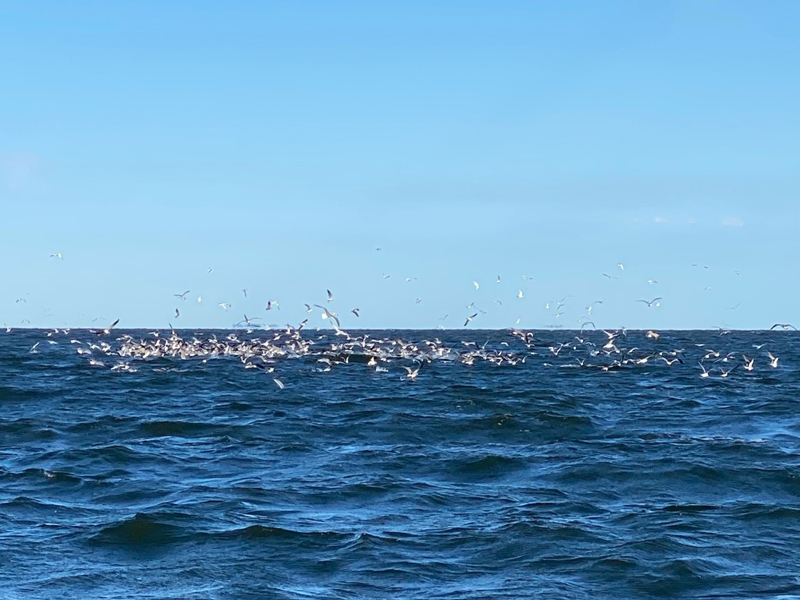It’s early in the morning and I’m heading out for a morning topwater bite. My kayak glides across the surface of the water, and there is a light fog rising off the creek parting as I pass through it. I’ve rigged one of my rods with a Heddon Spook, another with a half-ounce jig with a four-inch white paddletail. Today I’m hunting striped bass on a local Chesapeake Bay tributary.

I can hear the fish off in the distance breaking the surface of the water and birds squawking and diving. I head to the commotion, rod in hand. As the fog clears I can see the fish and birds. I take a cast, keeping my bait low and as close to the water as possible so I don’t accidently snag one of the seagulls. My lure hits the water and immediately blows up — I’m hooked.
Fishing under birds is one of my favorite ways to fish. And though fishing birds while kayak fishing can be difficult, it’s not impossible. You need to find birds to fish under first, and then get to the spot in time before the bite stops. This is difficult enough on a powerboat let alone on a kayak. So I’ll say right from the start, when I fish below birds from a kayak it is almost always an unexpected opportunity. Here are some tips that should help you enjoy the same kind of luck.
- I don’t take binoculars on the kayak. If I can’t see birds without the assistance of binoculars then they are probably too far off in the distance to reach before the bite is likely to stop.
- The best opportunities come when you fish the mouths of feeder creeks and rivers, or along the shoreline of the Bay. The exception is fishing big water like the lower Potomac where you can run across birds several miles up the river.
- Keep an eye out for birds on the move. They are opportunists, and if one bird is feeding others will fly in that direction and join in the feeding frenzy. I always look for feeding birds in the direction the other birds are heading.
- Small birds such as terns feed on smaller bait fish like anchovies, while pelicans and seagulls will feed on peanut bunker and larger baitfish. So you will most likely find smaller fish like schoolie striped bass, bluefish, and mackerel under smaller birds. Under the bigger birds you will find fish like larger striped bass and red drum feeding.
- Unlike powerboats that can turn off a bite by doing things like powering through the birds and shifting gears, kayakers have more of a stealthy approach which makes it easy to keep any noise to a minimum. You can be less concerned about positioning for a drift over the fish, and can simply approach the action and start casting into the feeding frenzy without worrying about spooking them.
- Once I am hooked up I will play and release the fish as quickly as possible. If you play around too much taking that extra photo the school of fish will likely move on and you’ll have to chase them down.
- If the bite turns off, don’t despair. The birds will probably be sitting on the water. Use them as a marker to find the fish. Cast your bait and let it settle to the bottom, keeping note of the depth, and then work it back to the kayak.
- There have been times when I have been closer than a quarter mile from a feeding frenzy, but the action keeps turning off or the birds keep moving to different spots. Don’t bother with these fast-moving schools, they’ll wear you out.
Hopefully the next time you see birds feeding you will get the opportunity to make a few casts under them and catch a fish or two. Remember, a cast not taken is a fish not caught.
- By Eric Packard